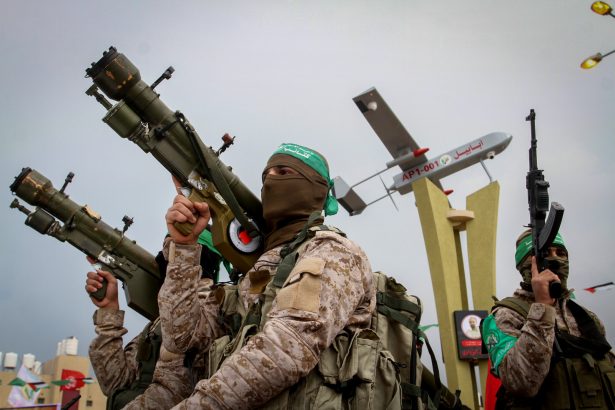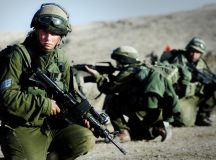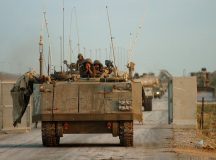Israel has been thwarting Iran’s global terrorist operations but has been less successful closer to home. The IRGC and its rocket-rich proxies now encroaches all around it. Confrontation is a matter of when not if.
The May 2021 round of fighting in Gaza brought with it the upending of the unspoken understanding between Israel and Hamas and a level of intercommunal violence within Israel that has not been seen in quite some time. The scale of the rocket attacks on the Jewish state must also be counted among the unusual elements of this latest flare-up, with Iran clearly identifiable as the enabling state behind Hamas and Palestinian Islamic Jihad (PIJ), the two primary factions behind these attacks.
Israel had dealt a series of embarrassing blows to Iran of late, essentially without reply, leading to a degree of complacency. The latest Gazan war is a warning flare that there are some dangerous trend-lines developing for the Israelis.
In January 2020, a U.S. drone strike in Baghdad killed Qassem Soleimani, Iran’s de facto deputy leader and the man who, as head of the Quds Force within the Islamic Revolutionary Guards Corps (IRGC), was responsible for exporting the Revolution abroad. Israel played a key role in locating Soleimani for the strike. Over the subsequent eighteen months, Israel has struck repeatedly at Iran, at the nuclear infrastructure and senior regime officials, while the Iranians’ attempted responses have been thwarted or fumbled, a repeat of what happened after Israel killed Hezbollah’s military leader in 2008.
So, Israel has rather good visibility within IRGC’s asymmetric apparatus, and seemingly decisive capacity to thwart its global terrorist operations. Where Israel shows signs of having miscalculated in its policies is closer to home, in dealing with Iran’s expanding strategic position in the region.
In conventional military terms, Iran is weak. This is partly by design. When the clerics took over the Iranian state, they inherited the powerful army their king had built and were faced with what to do about it. The Islamic Republic’s founder, Ayatollah Ruhollah Khomeini, once said that Artesh (the conventional army) has ‘the Shah in its blood’. Disbanding Artesh would have created too much trouble, however, so the clerical regime imposed its model of Revolution — building up a parallel military structure, IRGC, to contain and eventually dominate the state.
IRGC was initially put together partly from the komitehs (revolutionary committees) and hezbollahi (militant gangs gathered around mosques) that had spread across Iran during the year-long campaign against the Shah, grouped around a cadre of Guardsmen who had been trained in Lebanon by the Palestine Liberation Organization (PLO) with indirect support from the Soviet Union. The importance of IRGC’s origin story is that it is also the true story of the origins of Lebanese Hezbollah, which set the template for the spread of the Revolution around the region down to the present day — and the organic, integral nature of this spread is something the Israelis have failed properly to deal with, most obviously in Syria.
Syria is the crucial theatre: Israel was too slow to react when Iran launched a transnational Shi’a jihad in defence of the Assad regime, bringing thousands and thousands of IRGC-controlled Islamist militants into the country and vastly expanding the size and reach of Hezbollah. Israel then placed far too much trust in the Russians, surrendered its assets among the Syrian rebels for no good reason, and is now reduced to insisting on the efficacy of an airstrike campaign that has hit the same IRGC positions multiple times and done nothing to disrupt Iran laying down roots in Syria that cannot be torn up.
The end result is Iran controlling three borders with Israel. Or, to put it another way: as Israel has mastered interdicting IRGC abroad, it has neglected to act decisively as IRGC encroaches all around it on the home front.
It was clear some time ago that the missile arsenals Iran has been enabling its various revolutionary divisions to create, as their size and sophistication increased, were going to constrain Israel’s strategic space and lead eventually to an awful decision having to be made on a terrible war to destroy the missiles or acquiescing to Iran’s regional designs for fear of this war — a war which will come eventually anyway since Iran’s designs include eliminating Israel. The unprecedented scale of the Hamas missile war this time is a foretaste of the dangers now facing Israeli population centres and critical infrastructure, and the very fact that there is uncertainty whether the drone the Israelis shot down near Beit Shean came from Iraq or Syria, is — as it was intended to be — a sign of the increasing unity of Iran’s imperial tentacles in their war against Israel.
As dangerous as the border situation is, the next major decision for Israel might well be further to the south, where there is the increasingly-obvious problem of Iran’s Houthis in Yemen, who might be restrained from attacking Israel directly for now, but there is no reason to believe this is a lasting fact about one of the most entrenched outposts of the Iranian Revolution. It was extremely glaring in Iranian messaging, during the Gaza war and since, that it tied the Houthi jihad to the Palestinian militants as fighting in a common cause.
As Israel has shown, the IRGC is hardly invincible; it has made progress in the region largely because it has not encountered serious opposition. Enacting such opposition is still possible, albeit now more difficult and costly, but the confrontation is inevitable and the difficulty and cost will only increase with time.





































